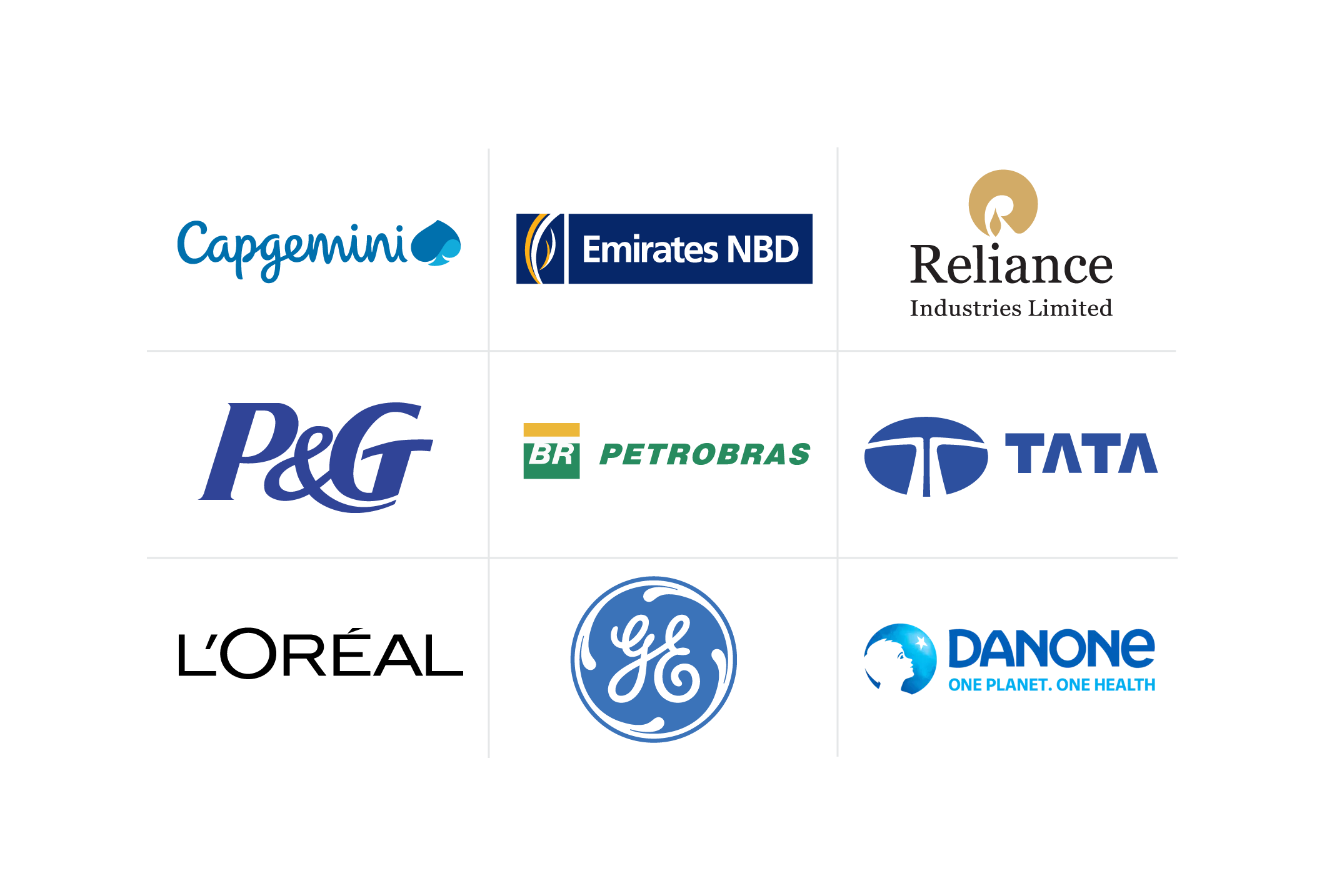Real-World Competency Gap Examples in Corporate Environments
Competency gaps occur across all industries. Learn about these gaps, including competency gap examples and the benefits of a competency gap analysis for closing those gaps in a corporate environment.
![[Featured Image] A group of HR colleagues review competency gap examples after conducting a competency gap analysis as part of planning workplace learning and development programs.](https://d3njjcbhbojbot.cloudfront.net/api/utilities/v1/imageproxy/https://images.ctfassets.net/2pudprfttvy6/5G081WQkEjoq5ww3pVCsoL/91c612b6a4fec2a684428611c44c0ae2/GettyImages-682897907.jpg?w=1500&h=680&q=60&fit=fill&f=faces&fm=jpg&fl=progressive&auto=format%2Ccompress&dpr=1&w=1000)
As technology such as artificial intelligence and automation has triggered a continuous evolution of the work environment, companies across nearly every industry need professionals with the necessary skills to fully meet the expectations of their roles. Your business faces a unique challenge as it becomes more difficult to successfully hire employees who have the right skill sets to meet these new demands.
These shortages due to a lack of skills are known as competency gaps. Closing them requires creativity and a willingness to invest in training. The competency gap is an issue on the minds of many business leaders because, according to a survey by Adecco, “92 percent of executives think that American workers aren't as skilled as they need to be [��.”
Read further to discover more about competency gaps, including competency gap examples and the benefits of a competency gap analysis for closing those gaps in a corporate environment.
Understanding competency gaps and their impact
Competency gaps occur when an employee’s skills don’t match the required skill set for a specific role. These gaps can occur for various reasons, including the swift evolution of technology, the inability to recruit top talent, or a business’s uncertainty about what skills are truly needed to reach its goals. One thing is certain: addressing competency gaps will help your employees be more productive and create an efficient and growing business that stays competitive even as the industry changes.
Defining competency gaps in the workplace
Competency gaps in the workplace occur when your employee’s actions, outcomes, or observable behaviors don’t match the expected results of someone in their role. Competency gaps also refer to desired skills for a role that potential hires don’t possess, which might result in a struggle to hire the right candidate.
The strategic role of competencies in business performance
Employees with the right competencies are vital for your business's successful performance. After all, the workforce drives progress and productivity forward by completing work and meeting expectations. Employees with the right skills and expertise are foundational in propelling your business toward the future growth and productivity you’re hoping for.
Recognizing common competency gap examples
Competency gaps develop in several common areas, such as technical skills, leadership abilities, and communication. Competency gaps include both technological skills and workplace skills. Some common examples include:
Technical skills and knowledge
Technical skills and knowledge are common areas where employees experience competency gaps, often due to the rapidly evolving nature of technology. Coding, app development, and IT skills are all examples of where competency gaps occur. Although areas like data analytics, information technology, and engineering often experience significant gaps in the required skills, tech skills are in short supply across all industries.
Leadership and management competencies
When your company experiences leadership and management competency skill gaps, it makes it difficult to grow or compete with other businesses. A lack of leadership skills also reduces employee retention and productivity during daily tasks. These skills include interpersonal and communication skills, adaptability, cultural competence, and emotional intelligence.
Communication and interpersonal skills
Communication and interpersonal skills affect how you translate your thoughts, feelings, goals, and ideas to others. Strong skills in this area allow teams to listen positively to each other, solve conflicts, and have empathy. When employees have a communication skills gap, the ability to collaborate, de-escalate issues, and solve problems all suffer.
Adaptability and change management
Adaptability refers to your ability to react productively to unexpected changes and solve problems, even if things aren’t going correctly. In contrast, change management deals with how you or your employees navigate organizational changes through various stages to ensure a successful transition.
Skill gaps in these areas tend to mean that your employees might struggle with thinking critically and quickly about problems, which can delay or even halt the implementation of a solution. Your workforce might feel more stressed or experience moments of panic because your team doesn’t feel confident handling issues, which can hinder productivity.

Assessing competency gaps through case studies
Competency gaps aren’t theoretical but rather real issues that companies face. The following offers some examples of competency gaps in real-world companies:
Case Study 1: Tech company skills gap
Tech companies are facing an increasingly large skills gap as software and technology evolve, while the number of traditionally educated potential employees grows smaller. As the talent pool shrinks, these companies have to find creative new ways to seek out new hires.
Appian, a platform-as-a-service vendor, has decided to address this issue by providing a low-code development bootcamp to professionals interested in becoming tech workers but might have an unconventional educational background. Appian uses software designed for people with beginner coding skills, widening the potential pool of talent because it provides opportunities to people from all different professional backgrounds, such as low-income and under-skilled workers and veterans [].
Recognize, a private equity firm, did something similar by partnering with a training company that provided skills-development opportunities to people from less traditional backgrounds, widening the entry-level talent pool [].
Case Study 2: Leadership skill gaps addressed in-house
The rapidly changing nature of work means the need for dynamic, confident leaders is at an all-time high. Leadership gaps can affect your company across all departments since capable leaders help support staff in their work and future growth. Various issues, including low employee morale and a drop in productivity, can arise without effective leadership.
To address leadership skill gaps, Amazon has budgeted millions of dollars for in-house training and development programs. These programs invest in current employees by providing training in various skill sets. For example, Amazon plans to train non-technical employees in software engineering. The training is voluntary and provides employees with the chance to take ownership of their futures [].
IBM’s Extreme Blue does something similar. Business leadership identifies employees with leadership abilities and provides them with professional development opportunities through a three-month internship [].
Case Study 3: Communication training for professionals
Teaching employees how to communicate effectively helps to support listening, teamwork, and conflict resolution. Randstad USA, a staffing organization, provides in-house training, including presentation and communication courses. Bonobos, a clothing company, offers something similar through training for entry-level employees to learn how to communicate effectively with leadership, with the possibility of these employees becoming leaders themselves [].
Strategies for closing competency gaps
Employers play a crucial role in closing competency gaps. You can create a productive and competitive work environment by identifying needed skills through competency gap analysis and providing the resources and tools to address those skills. Some ways to close competency gaps include:
Tailored training and development programs
Tailored training and development programs are an effective way for you to close skills gaps within your company because they address the unique needs and challenges of your employees. Data sources like employee reviews help you to see where someone might benefit from development opportunities. You can even offer your employees a survey in which they identify what skills they would like to improve upon. Then, work with the employee to create a development plan you both feel good about.
Mentorship and coaching programs
Mentoring and coaching programs provide a substantial opportunity for your employees to learn from seniority in a beneficial way. Mentees gain access to their mentor’s knowledge, which can assist them in developing new skills or strengthening current ones while expanding the possibilities of their future careers. Mentors learn new or original ways of thinking from their mentees. Typically, both people benefit from this type of program.
Getting started with ����vlog�����ۿ�
Rather than seeing competency gaps as obstacles, business leaders can use them as opportunities for growth and innovation. Offering robust training that provides value to employees can increase productivity, morale, and competitiveness for your business.
If you’re considering addressing any competency gaps within your company, ����vlog�����ۿ� for Business provides businesses like yours access to valuable courses and Professional Certificates to further develop your team’s skills. With ����vlog�����ۿ�, you can train teams across your organization in the skills that matter most in today’s digital economy. Your employees will gain access to content from 350+ leading universities and industry partners, where they can build real-world experience with innovative skills, tools, and technologies while earning globally recognized credentials.
Our customizable, scalable learning solutions balance workplace skills and technical skills training in diverse formats, from video clips to guided projects and Professional Certificates. Accelerate your digital transformation and equip employees to drive growth with ����vlog�����ۿ�.
Article sources
1. Adecco. “, https://www.adecco.com/en-us/employers/resources/article/skills-gap-in-the-american-workforce.” Accessed April 21, 2025.
2. Computer World. ", https://www.computerworld.com/article/1627748/how-tech-companies-are-responding-to-the-talent-gap.html#:~:text=Low%2D%20and%20no,of%20engineering%20Appian." Accessed April 21, 2025.
3. Forbes. ", https://www.forbes.com/sites/stand-together/2024/02/29/case-study-a-future-proof-hiring-strategy-to-build-a-sustainable-techforce/?sh=793966e53295#:~:text=It%E2%80%99s%20clear%20that,over%20education%20pedigree." Accessed April 21, 2025.
4. SHRM. ", https://www.shrm.org/topics-tools/news/organizational-employee-development/amazon-commits-to-investing-millions-training." Accessed April 23, 2025.
5. IBM. ", https://www.ibm.com/careers/blog/extreme-blue-ibms-leadership-program-for-future-tech-business-leaders#:~:text=Blue%20at%20IBM,innovation%2C%20and%20growth." Accessed April 24, 2025.
6. Indeed. ", https://www.indeed.com/career-advice/career-development/best-training-programs-companies#:~:text=Bobonos%20offers%20a,relationships%20with%20customers." Accessed April 24, 2025.
This content has been made available for informational purposes only. Learners are advised to conduct additional research to ensure that courses and other credentials pursued meet their personal, professional, and financial goals.

